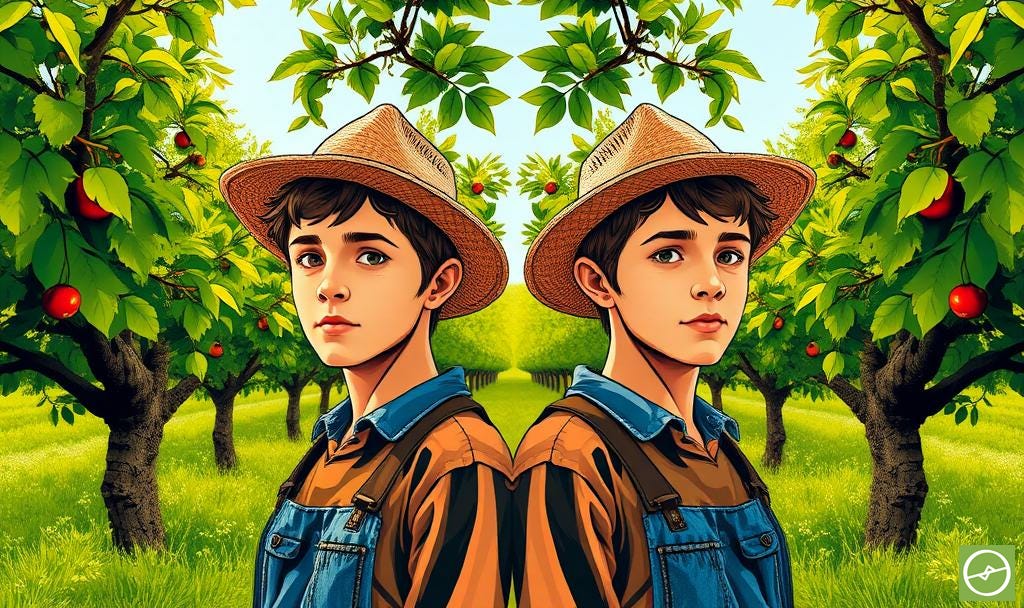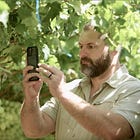Digital Twins and Predictive Models: How Virtual Orchards Shape the Future
How Digital Twins and Predictive Models Are Revolutionising Orchard Management with Data-Driven Decision-Making
Agriculture has always been about balancing the known with the unknown.
Farmers work with decades of experience, yet every season brings new variables - changing weather, shifting market demands, evolving pest pressures.
In recent years, a powerful new tool has emerged to help close the gap between uncertainty and confident action: the “digital twin”.
What Is a Digital Twin in Agriculture?
In its simplest form, a digital twin is a virtual replica of your orchard.
It’s not just a static map. It’s a living model that updates in near real-time. It integrates multiple streams of information:
Tree health data from drone and satellite imagery.
Microclimate readings from in-field sensors.
Irrigation and soil moisture data from pump logs and probes.
Forecast data including temperature, rainfall, frost and disease risk.
By combining these inputs, a digital twin is used to simulate how your orchard is likely to respond to specific interventions before you make them in the field.
From Insight to Action
Think of it as a sandbox for decision-making.
Want to change your irrigation scheduling? See how different water volumes might affect canopy growth, soil moisture retention, and stress risk.
Considering variable rate fertiliser application? Model how it might influence NDVI values and yield over time.
Concerned about frost risk? Use temperature and topography data to forecast where protective measures will be most effective.
By running these scenarios digitally, you can make data-backed choices with far greater precision and confidence.
Predictive Models -The Engine Behind the Twin
The predictive modelling layer takes historical data and turns it into a forward-looking advantage. It uses:
Machine learning to detect patterns invisible to the naked eye
Historical yield data to inform likely outcomes
Weather models to anticipate stress events and optimise interventions
These models grow stronger over time. Each season of data improves their accuracy, allowing for increasingly refined recommendations.
Why It Matters
Traditional farming decisions often rely on experience and gut instinct. While those are still vital, they can be augmented by tools that reduce costly trial-and-error in the field.
Digital simulations can assist in increasing operational efficiency by targeting resources where they matter most; supporting environmental sustainability efforts by avoiding over-application of water, fertiliser, and chemicals.
In a world of rising input costs and tighter margins, digital twins and predictive models aren’t just “nice to have”. They are fast becoming essential to remain competitive.
Crop Yield Forecasting with Digital Twins
One of the more compelling use cases for digital twins is in the development of fruit and nut yield forecasting.
For example, imagine that during early iterations of an AI-driven fruit sizing tool, a development team faces a common data science bottleneck: not enough in-field ground truth data!
The available dataset of physically measured fruit is simply too small to train a robust machine learning model. The workaround? Engineers and data scientists design thousands of digital twin orchards, each with large volumes of simulated fruit.
These are randomly varied in size within biologically realistic parameters based off real world data. The digital twin orchards allowed the system to "see" and "size" virtual fruit in a controlled environment, augmenting the real-world dataset and allowing the model to learn at scale.
This approach reduced dependency on manual in-field measurements while still capturing the variability needed for model training. The result was a smarter, faster-developing fruit forecasting system; and one that could scale globally while adapting to inputs of local conditions.
As more orchards adopt app-based fruit sizing and yield estimation tools, the value of digital twins becomes clearer. They’re not just digital maps; they’re training grounds for AI, allowing models to simulate what-if scenarios, improve prediction accuracy, and provide growers with earlier and increasingly reliable forecasts.
The Future Is Iterative
Today’s digital twins are powerful, but tomorrow’s will be even smarter.
We’ll see models that factor in global supply chain signals, carbon market participation, and biodiversity metrics.
As AI and simulation tools mature, farmers will have an even clearer view of the future before taking a single step in the orchard.
Most of these simulation-based optimisations will happen in the backend - helping to build robust digital products - and present themselves within the plug-and-play solution offerings; that are easy to implement and even easier to use.
The digital twin advantage doesn’t replace the farmer’s skill and instinct - it sharpens it. Much like the advent of the weather forecast (which also gets better with time and additional input datasets) - it’s a second set of eyes, a forecasting tool, and a risk mitigator all rolled into one.
The question isn’t whether digital twins will transform agriculture. The question is, “How soon will you utilise digital twins tech that supports your orchard management?”
Thanks for reading. Thanks for growing. See you in the next one.




